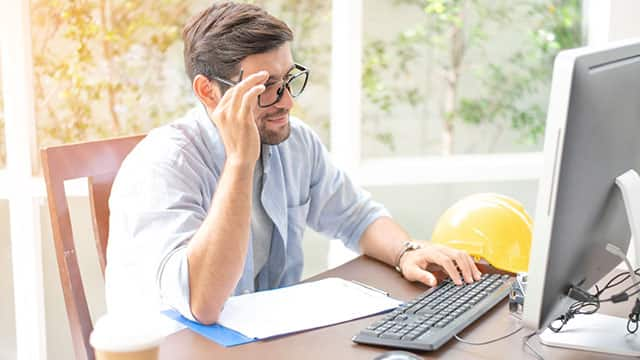Sexually transmitted diseases (STDs), also known as sexually transmitted infections (STIs), are contracted through various forms of sexual activity, including oral sex. Some STIs are more likely to affect the mouth than others. Some common STDs of the mouth are herpes, gonorrhea and syphilis. Keep in mind that it's also possible to contract illnesses, such as hepatitis A, B and C, as well as other STIs.
Symptoms of Oral STDs
Oral symptoms that could indicate an STD include:
- Sores in the mouth, which may be painless
- Lesions similar to cold sores and fever blisters around the mouth
- Sore throat and difficulty swallowing
- Redness with white spots resembling strep throat
- Swollen tonsils and/or lymph nodes
According to the Centers for Disease Control and Prevention (CDC), an oral STD often doesn't produce any noticeable symptoms. So it's important to be aware of both your own oral and sexual health and that of your partner.
Prevention
Step one to help prevent STDs is communicating with your partner — have they been tested recently? Do they have any symptoms? Step two is practicing safe sex, including safe oral sex (using a barrier method). You should also maintain a high standard of oral hygiene, which reduces your risk for developing any type of sore or infection in the mouth. Note that you have an increased risk of contracting STIs during oral sex if you have gum disease or any oral wounds.
Common Oral STDs
Oral Herpes
Herpes is the most common oral STD in the United States and is present in more than half the adult population. Many contract the disease as children by getting a kiss from a family member or friend infected with HSV-1, according to the American Sexual Health Association. Herpes causes oral blisters and cold sores, which usually heal in 7–10 days, but can break out again at any time. Oral herpes can be transmitted to genital tissue, even when no symptoms are present.
Gonorrhea
While gonorrhea is generally transmitted through sex, a 2019 study indicates that kissing an infected person may be a risk, as well. It's most common among people ages 15–24. Oral symptoms of gonorrhea include a burning sensation and pain in the mouth and throat, as well as swollen tonsils and white spots on the tissue. Many people experience no symptoms at all, so testing is very important.
Syphilis
Syphilis is transmitted through direct contact with a syphilitic sore, according to the CDC. Oral symptoms of syphilis include sores on your lips, tongue, gums or elsewhere in the mouth and throat. They could start as small red patches and develop into larger, open sores if left untreated.
Epstein Barr Virus (EBV)
EBV is contracted or transmitted through contact with bodily fluids, such as saliva, making kissing a high-risk activity with anyone infected, warns the CDC. Oral symptoms of EBV are mononucleosis or development of oral hairy leukoplakia, which can produce white patches in the mouth that are hard to the touch and can't easily be wiped away.
CMV is a common herpes virus that affects half of adults over 40 years old. While sexual transmission is possible, the CDC notes that CMV is also passed on through contact with other bodily fluids or from babies to adult caregivers. People with compromised immune systems are at the highest risk for CMV.
Hepatitis
Hepatitis A and C can be transmitted through oral sex, although the risk is lower than with some other STDs. You can get vaccinated against types A and B, but not C. Adults with hepatitis could be candidates for oral cancer, so watch for symptoms and work closely with your doctor.
Treatment for Oral STDs
Treatment depends on the type of STD and its severity. Mild oral herpes, for example, can be treated through the prescription of a topical anesthetic to reduce the pain from oral blisters and lesions while the immune system works to restore your oral health. In more severe cases, however, anti-viral medications can help to speed up the process. Oral gonorrhea, chlamydia and syphilis are usually treated with a range of antibiotics. A prescription mouth rinse can be used to help cleanse and soothe canker sores and other mouth irritations.
Outlook
If you've had any of these STDs of the mouth in the past and received treatment for them, it's possible for you to contract the same or a different disease again if you have sexual contact with an infected partner. Oral herpes can remain dormant for some time and become active again down the line, particularly in patients who have weakened immune systems.
The key ways to help prevent oral STIs are to always communicate with potential partners before sexual activity, visit your doctor to get checked for STIs and get treatment immediately if you notice symptoms. Your dentist is just one member of your healthcare team committed to keeping you safe and healthy!
Oral Care Center articles are reviewed by an oral health medical professional. This information is for educational purposes only. This content is not intended to be a substitute for professional medical advice, diagnosis or treatment. Always seek the advice of your dentist, physician or other qualified healthcare provider.
ORAL HEALTH QUIZ
What's behind your smile?
Take our Oral Health assessment to get the most from your oral care routine
ORAL HEALTH QUIZ
What's behind your smile?
Take our Oral Health assessment to get the most from your oral care routine















